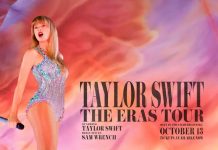Music videos have evolved significantly since MTV introduced “Video Killed the Radio Star” in 1981. What began as 24/7 music television has transformed into a dynamic medium that continues to shape how we experience music, with platforms like TikTok now leading the charge. This evolution reflects not just technological advancements, but also the changing ways in which we connect with music in an increasingly fast-paced world.
From MTV Icons to YouTube Sensations
MTV was a groundbreaking platform in the early 1980s, revolutionizing how we consumed music. It wasn’t just about listening to your favorite tracks—you were watching the artistry unfold on screen. Icons like Michael Jackson, Madonna, and Prince used the platform to create visually stunning, narrative-driven videos that were as memorable as the songs themselves. Michael Jackson’s “Thriller” set a new standard, blending cinematic storytelling with music in a way that had never been done before.
The arrival of YouTube in the mid-2000s marked another seismic shift. The platform democratized access to music videos, allowing indie artists to gain visibility alongside major stars. Viral hits like Psy’s “Gangnam Style,” the first video to surpass one billion views, exemplified the power of the internet in transforming how music is discovered and shared.
Now, TikTok is at the forefront, redefining the music video experience with its short, engaging clips. Songs like Lil Nas X’s “Old Town Road” gained popularity on TikTok before dominating the charts, illustrating how the platform’s algorithm can turn a track into a cultural phenomenon almost overnight.
Aesthetics: From High Production to DIY
The aesthetics of music videos have shifted dramatically over the years. In the 1980s, music videos were characterized by high production values and elaborate visuals, often with significant budgets behind them. Directors like Spike Jonze and Michel Gondry brought an artistic touch to the medium, creating videos that were as much about visual storytelling as they were about music.
By the 2000s, however, the rise of affordable technology and platforms like YouTube sparked a new trend. DIY aesthetics became increasingly popular, with creativity and authenticity taking precedence over big budgets. This era saw a surge in raw, relatable videos that resonated with audiences for their realness.
Today, TikTok has introduced a new aesthetic that prioritizes short, eye-catching content designed for mobile consumption. Vertical video formats and quick, impactful visuals are now the norm, with less emphasis on narrative and more on immediacy. TikTok’s interactive features also allow fans to engage with and even reshape content, creating a more participatory culture around music videos.
How We Engage: From TV to Viral Sensations
Our engagement with music has evolved alongside music videos. During MTV’s peak, a well-crafted video could propel a song to the top of the charts, driving album sales and defining an artist’s career. Music videos were not just a promotional tool—they were an integral part of an artist’s brand and public image.
The internet, particularly YouTube, revolutionized this dynamic. Music videos became more accessible, allowing for a broader and more diverse range of artists to reach global audiences. The platform quickly became a hub for music discovery, with videos playing a central role in how people connected with new songs.
TikTok has taken this engagement to the next level. The platform’s viral challenges and short clips have made music discovery an interactive experience. Songs often gain traction on TikTok before they’re officially released. The platform’s algorithm playing a significant role in determining which tracks become hits. This has led to a music culture that’s increasingly about participation, where fans are active contributors to a song’s success.
Conclusion
At Music Industry Weekly, we are committed to staying at the forefront of music culture. The transition from MTV’s golden age to TikTok’s viral era underscores the continuous evolution of music videos. As technology continues to evolve, we anticipate even more innovative ways for artists to connect with audiences. Music videos will continue to be a powerful medium for artistic expression and cultural influence, regardless of the platform.








